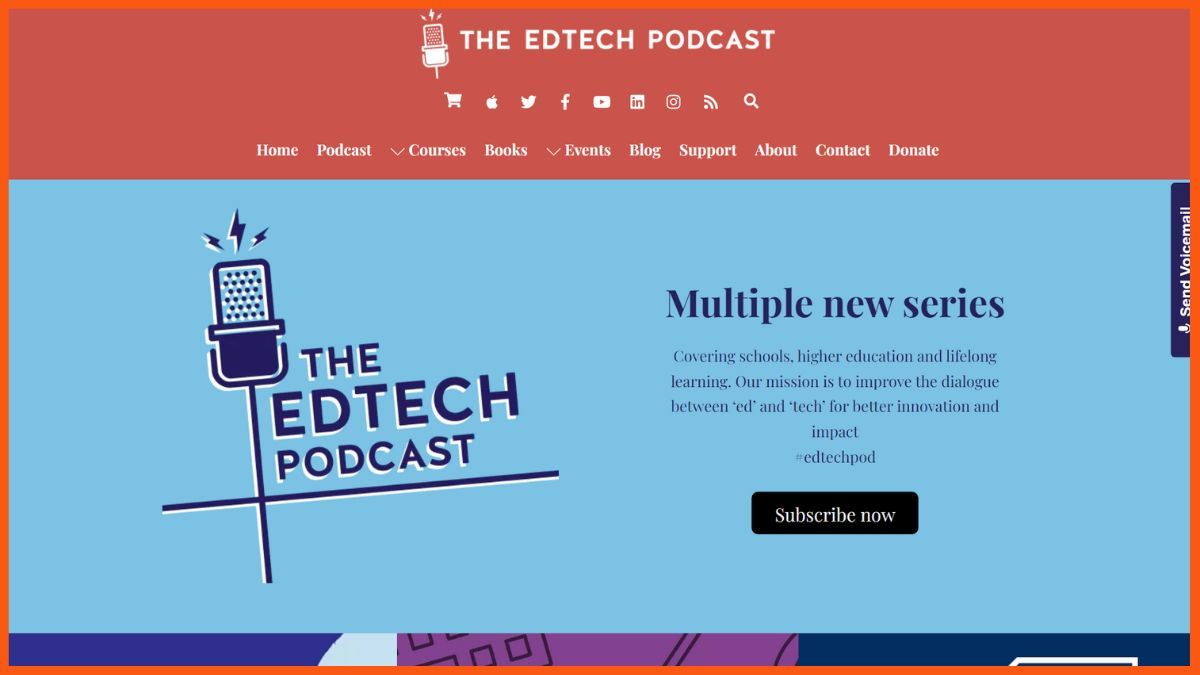9 Best Proven Methods to Grow the Initial User Base for Your EdTech Startup
📖 Learning
You have built an MVP EdTech product for the market after due research. You addressed core pain points, decided on the business models, built the team, and decided on the pricing tiers. Now, what!? How do you get your first 100 customers for the EdTech startup?
Edtech startups are rapidly growing with 9,043 startups in India presently. Finding the right audience for your product is difficult. It's even more difficult to monetize them, especially EdTech.
Why? EdTech products have multiple stakeholders, the user and buyer are not the same people. The buying decision lies in someone else's hand and the product's user is someone else, while the buyer is another third person. In addition to all this, the sales cycle is very long which slows down the monetization process even further.
So, how do you get targeted and paid users for your product? Today we will look into the marketing channels to tap the market and analyze the top 5 EdTech problems.
Methods to Get the First Customers for an Edtech Startup
- Your Network
- Podcast
- Build in Public
- Cold Outreach
- Clear Marketing Plan
- Leverage Communities
- Guest Posting
- Affiliate Marketing
- Create Niche Content
Top 4 EdTech Startup Challenges
Methods to Get the First Customers for an Edtech Startup
Finding the first few customers is crucial to getting your idea validated. Also, if you fundraise, then showing that your product has a market will help. Nonetheless, you need paying customers to sustain yourself in the industry. Here are 9 channels to reach your audience to get the first customer for your EdTech startup.
1. Your Network
The best possible way to start when finding initial users is by tapping into your existing network. Get in touch with your friends, family, ex-colleagues, college mates, etc, and let them know about your product.
In case, if it is a B2B product and these people are not the end users, referrals or their networks could help significantly. In the initial stage, it is vital to amplify the brand as much as possible. So, tell people about your product. Check with your professors and other corporate friends that could help you get started.
2. Podcast

The podcast craze is rising over time. Over 424 million listen to podcasts almost daily. If you find the right podcaster who caters to your targeted audience, then you can leverage its audience by making guest appearances.
You need to go through the series of vetting a bunch of podcasts in your niche. Then, you need to get in touch with them to collaborate. You have to make it valuable for both, so make sure to put forward a solid reason and value addition for the podcast's appearance.
3. Build in Public

Building in public is a recent marketing strategy where you build the product and keep the audience hooked with the updates. It generally revolves around building a strong social media presence and engaging with people.
It's a great way to find initial users because not only do you get direct access to them but also get feedback as you grow. Many founders use Twitter to build their personal brand and opt for a 'build in public' strategy. They build an audience and market their product simultaneously.
4. Cold Outreach
Cold Outreach is by far the most effective and fastest way to get your initial users. You need to reach out to your potential customers, inform them about your product, share value propositions and persuade them.
Many businesses use software and automation tools to make it easier. This removes the manual work of finding people and pitching them one by one. For this reason, you need pitching and cold-emailing skills.
Generally, the conversion rate of a cold email is 1%-5%. So if you need 100 users for your startup, you need to reach out to 2000 people at least. The conversion rate could vary depending upon personalized or bulk cold emails. You could A/B test and see what works for your EdTech business.
5. Clear Marketing Plan
10 random blogs would not get you a loyal audience, nor will a few guest appearances. You need a clear marketing plan with all the channels that you wish to work on. You can get a strategist to help you curate a proper brand strategy.
Marketing strategy includes market research, value proposition, different personas, competitive analysis, and much more. This gives you clarity about your marketing needs and how to approach them. Clear marketing needs to include points like platforms, approach, budget, budget per channel, etc. A real marketing plan includes much more details and gives you a clear direction to proceed with a proper cost to invest.
6. Leverage Communities
Communities are the new most popular way to market your brand. You find communities where your target audience spends time and engages. You talk to them and instead of directly pitching, you add value first.
It could be in a way to help them some network or some other way. When you help them, you build connections that ultimately convert to paid users. Communities work on building relationships and then monetizing them.
7. Guest Posting
Guest posting involves writing posts for other publishing pages and websites to leverage their existing audience. How to work about it? Look for relevant websites or publishing sites whose target audience matches yours. Then, look for guest posting opportunities. Alternatively, you could pitch to the editor for guest blogging. How does this help?
It helps you to tap a large audience, which leads to better brand exposure. Also, it improves SEO and traffic for your website. It helps you build authority in the niche. Additionally, If you choose to write about your product (many websites restrict promotional posts), you could pitch to thousands of people in one go.
8. Affiliate Marketing
Affiliate marketing is leveraging the audience of bloggers, podcasters, and other influential people. You pay a commission to promote your product via their content.
You need to start by picking affiliate partners and deciding commission structure. After this, you install tracking software and send relevant resources to the affiliates. Finally, you pay commission and rewards for every click/sale to the affiliates.
It's a scalable marketing channel to get a targeted audience. There are various other benefits such as boosting revenue, enhancing SEO, getting a loyal customer base, and better brand recognition.
9. Create Niche Content
Niche content over generic content helps you reach a specific targeted audience that is monetizable easily. If you go for more generic content, you can reach a larger audience, but the conversion will be poor. In contrast, if you opt for niche and industry-specific topics, the reach will be less, but the conversion will be high.
With niche content, you address customer-specific queries and pain points. As a result, you build authority and credibility.
So, these marketing channels and strategies equip your startup with new, relevant audiences. All you need to do is a vet and pick any 4-5 viable options from the above work consistently. Also, you need to focus on customer satisfaction to retain these users. Ensure to communicate your brand USP and build healthy connections along the way.

Top 4 EdTech Startup Challenges
It is hard for every startup to scale its business, but some challenges are specific to the EdTech industry making it difficult to sustain. Let us look at these challenges with a possible solution.
1. Multiple Stakeholders
EdTech has multiple stakeholders where buyers, users, and decision-makers are different people. It can be hard to define the target audience and often lead to wasted marketing effort.
Solution: Aim at the decision makers of the product. However, before all of this, it is crucial to understand and distinguish between the buyer, user, and decision maker. For example, Byju's users are students, and decision-makers are parents. So, they monetize by offering free counseling sessions at students' homes.
2. Interference With Traditional Ways
EdTech wasn't prominent a decade ago. It paved its way, especially in the pandemic. So, it is difficult to match your educational resources with the school's standard practices. Also, it is hard to eliminate resistance from parents and teachers to try the products.
Solution: Put forward the use cases and highlight product value. Show the results that your product can generate for them. It could be improved results or better understanding.
3. Low Usage & Retention
Another issue with EdTech products is low usage and retention. Sales cycles are long. If the buyers don't see any value, they unsubscribe or leave the product. It takes considerable time to get visible results.
Solution: Aim at enhancing user engagement with personalization and gamification. This helps in keeping users hooked to the product and comparatively interesting. Also, use social media to communicate with the users to build connections.
4. Slow Monetization
EdTech monetization takes a long time, depending upon the business structure. The users don't convert to paid users until they see results.
Solution: You need to generate visible results and demonstrate product value. Identify a sustainable business model. For instance, in the case of Vedantu, they sell paid courses but have free limited video material.
So, now you know how to tackle these common EdTech challenges. Building and growing an EdTech is difficult as the market was untapped for the longest time. The first ever EdTech startup in India was Byju's, which started in 2015. Not even a decade, and it's already booming.


Conclusion
Every startup needs to focus on product market fit. However, EdTech also needs to aim for a sustainable business model which generates and grows revenue. Finding targeted audiences and inculcating feedback is vital for growth and retention. Starting from scratch? Focus on solving a problem and validate that from your audience as soon as possible.
FAQs
How do you generate EdTech leads?
There are multiple ways EdTech startups can generate leads. Some of the methods include developing strategic and SEO content, writing guest blogs on popular websites, conducting live webinars, etc.
How do I get customers for my EdTech startup?
Getting customers for an EdTech startup requires persistent efforts. Some of the best ways to get customers for an EdTech startup are to have consistency in publishing content, delivering guest blogs, giving out testimonials, joining an expertise network, etc.
Is EdTech profitable?
The EdTech market is growing at a fast pace after the implementation of covid 19 rules in the world. For a recent consideration, in 2021 the EdTech market was valued at $254.80 billion and is expected to reach $605.40 billion by 2027. From this, we can conclude that Edtech is profitable.
What are EdTech startups?
Just like any other field, the education field was also going under major development due to technology. So the startups that combine education with technology are counted among EdTech startups. Startups like Byjus, Torsh, etc are examples of EdTech startups.
Must have tools for startups - Recommended by StartupTalky
- Convert Visitors into Leads- SeizeLead
- Website Builder SquareSpace
- Manage your business Smoothly Google Business Suite






